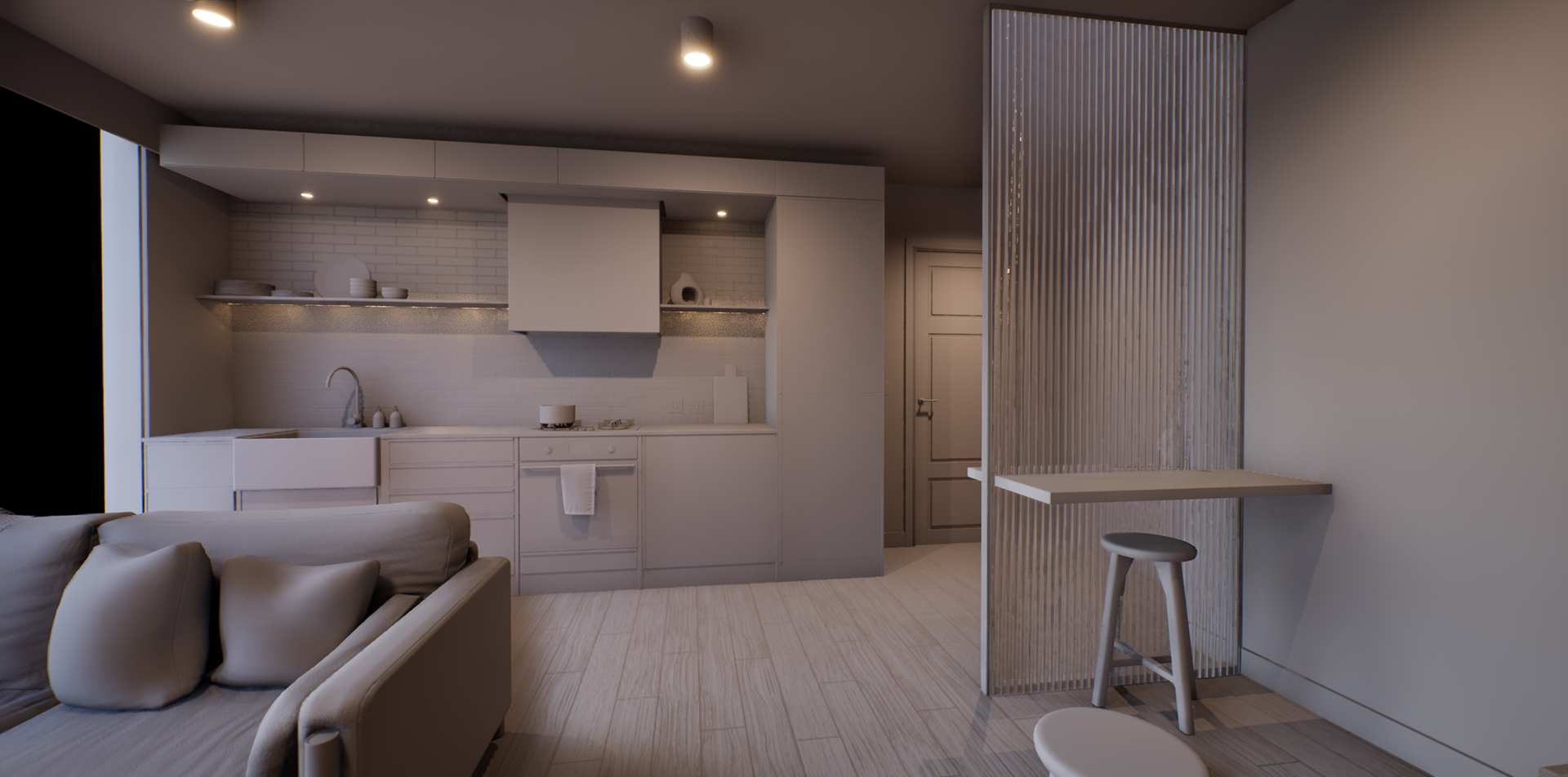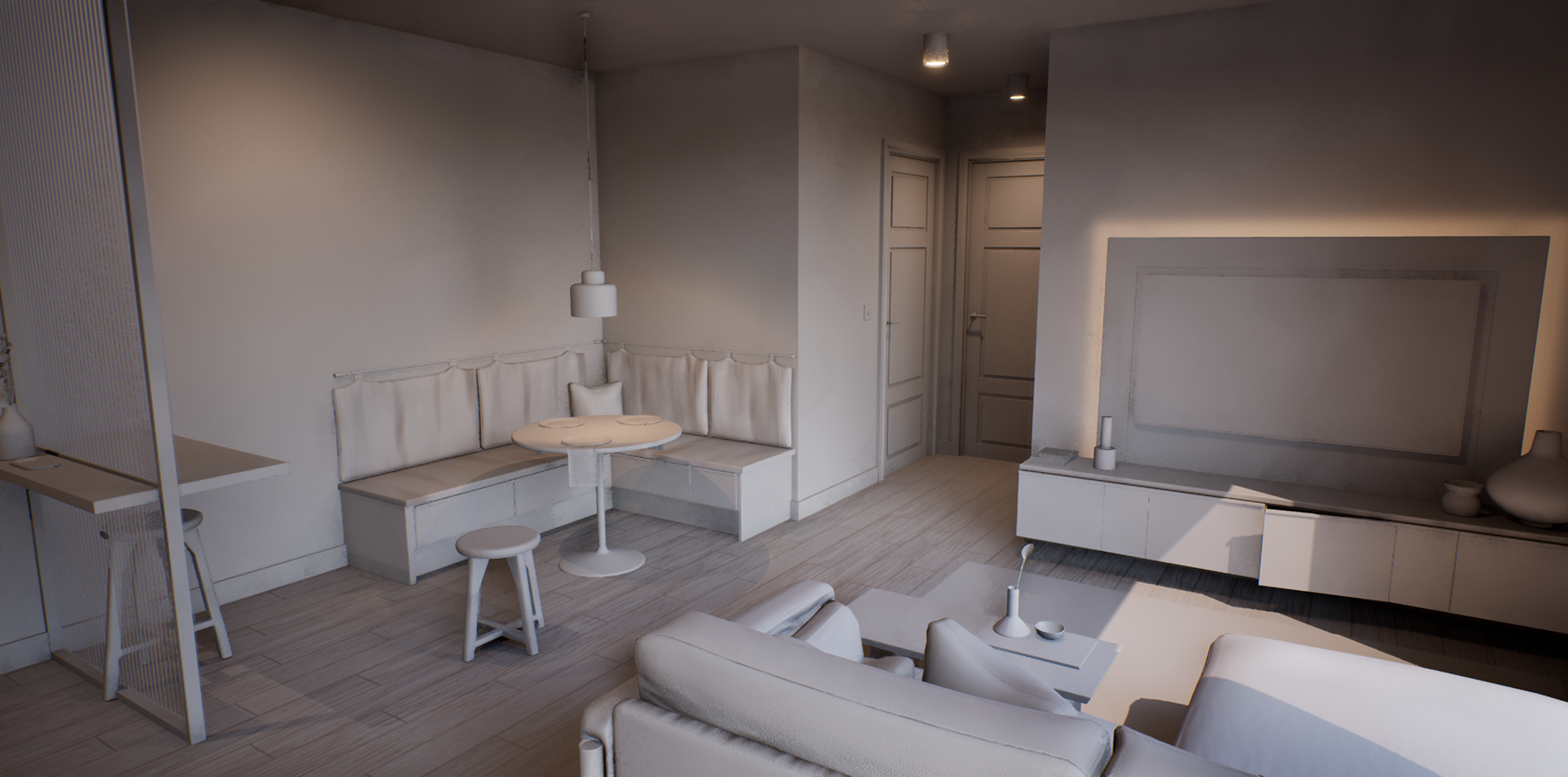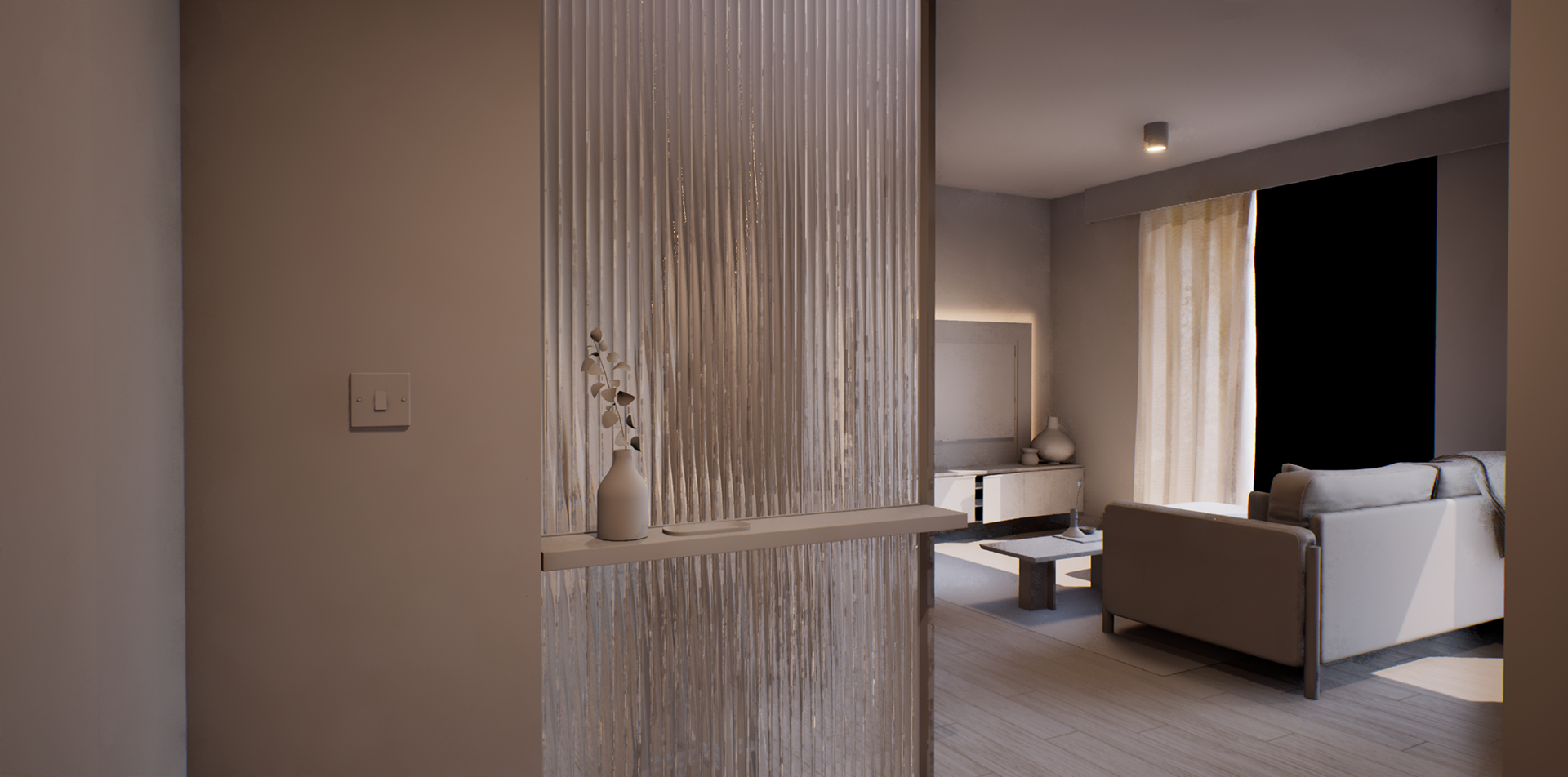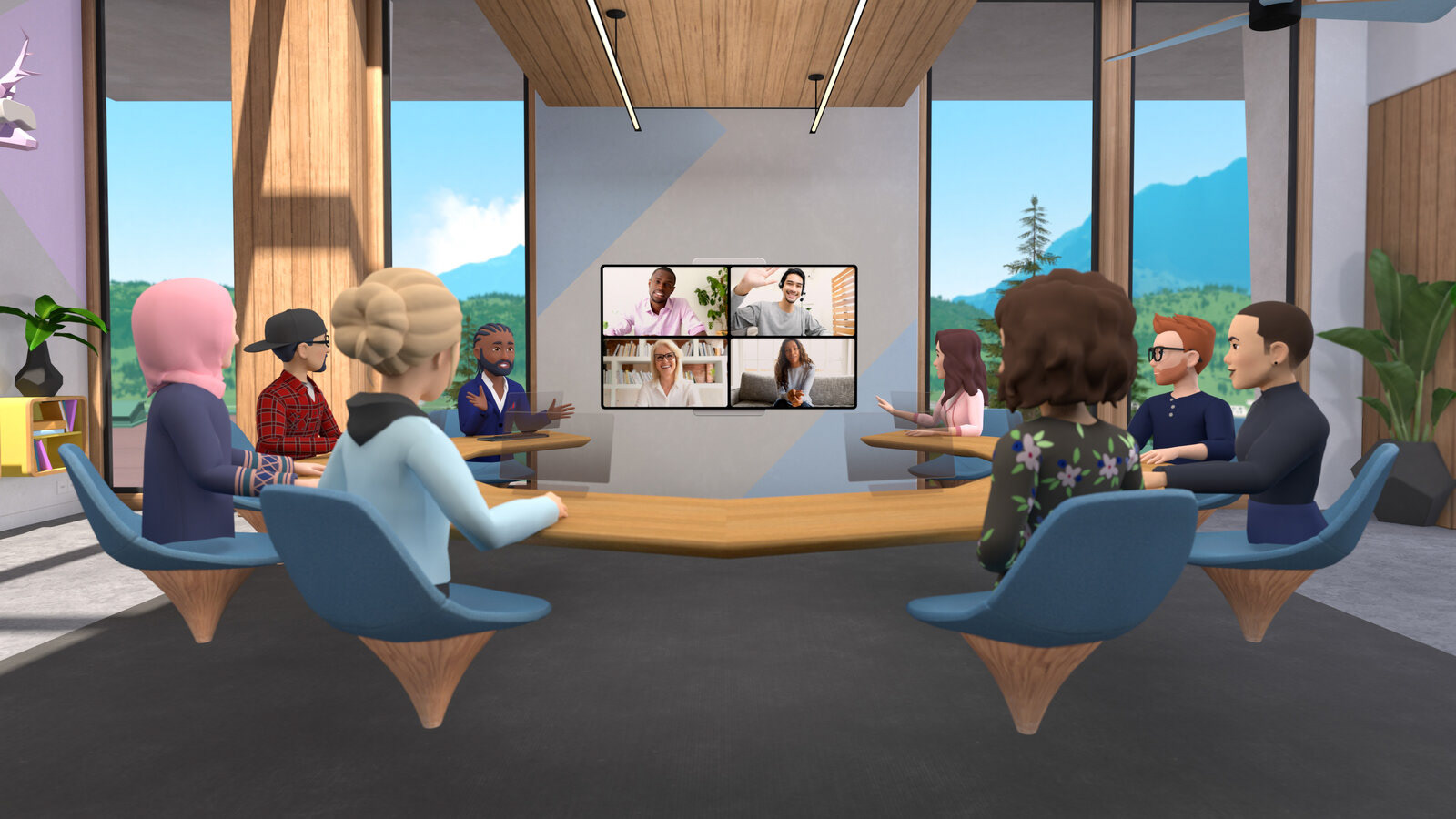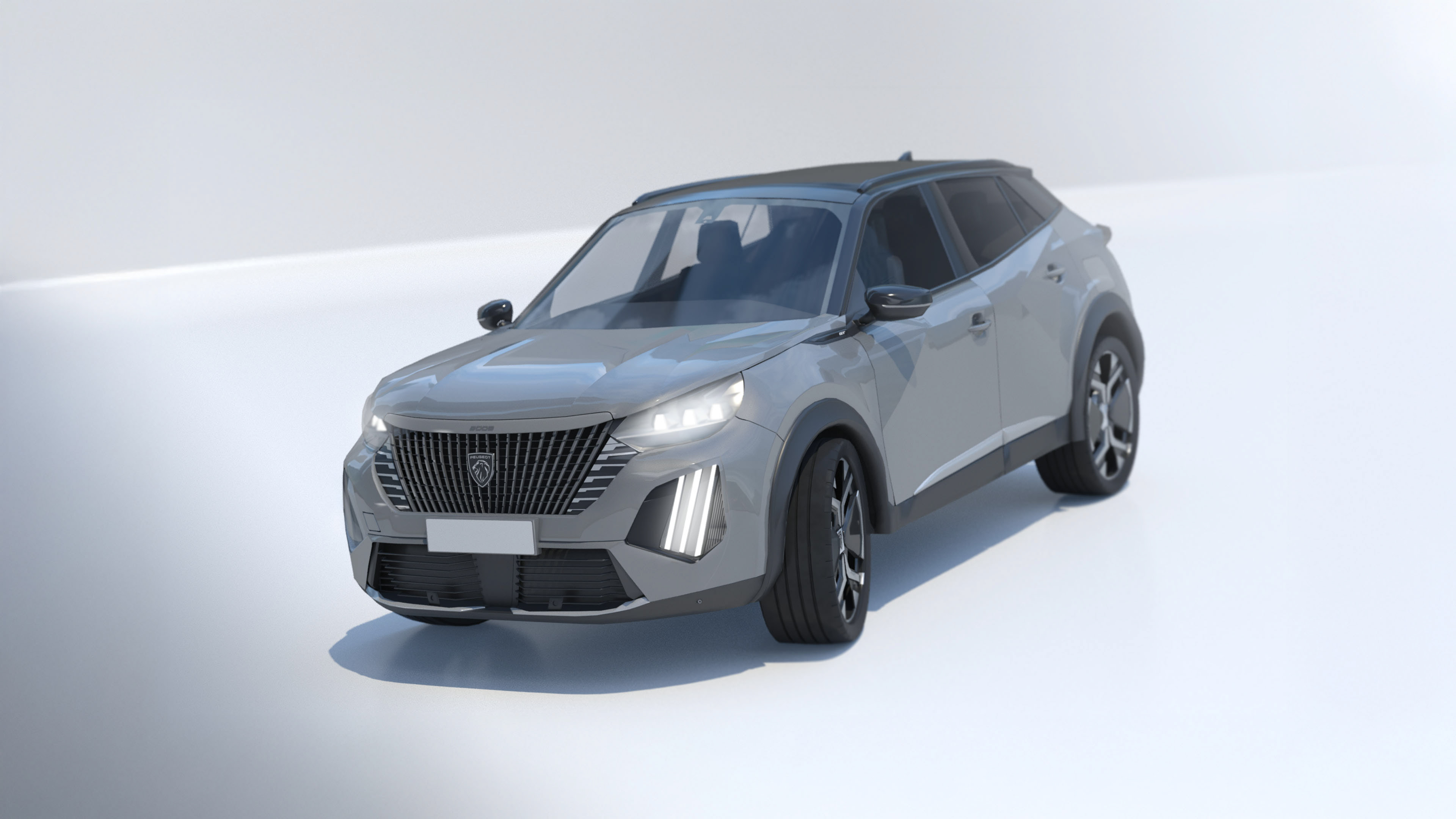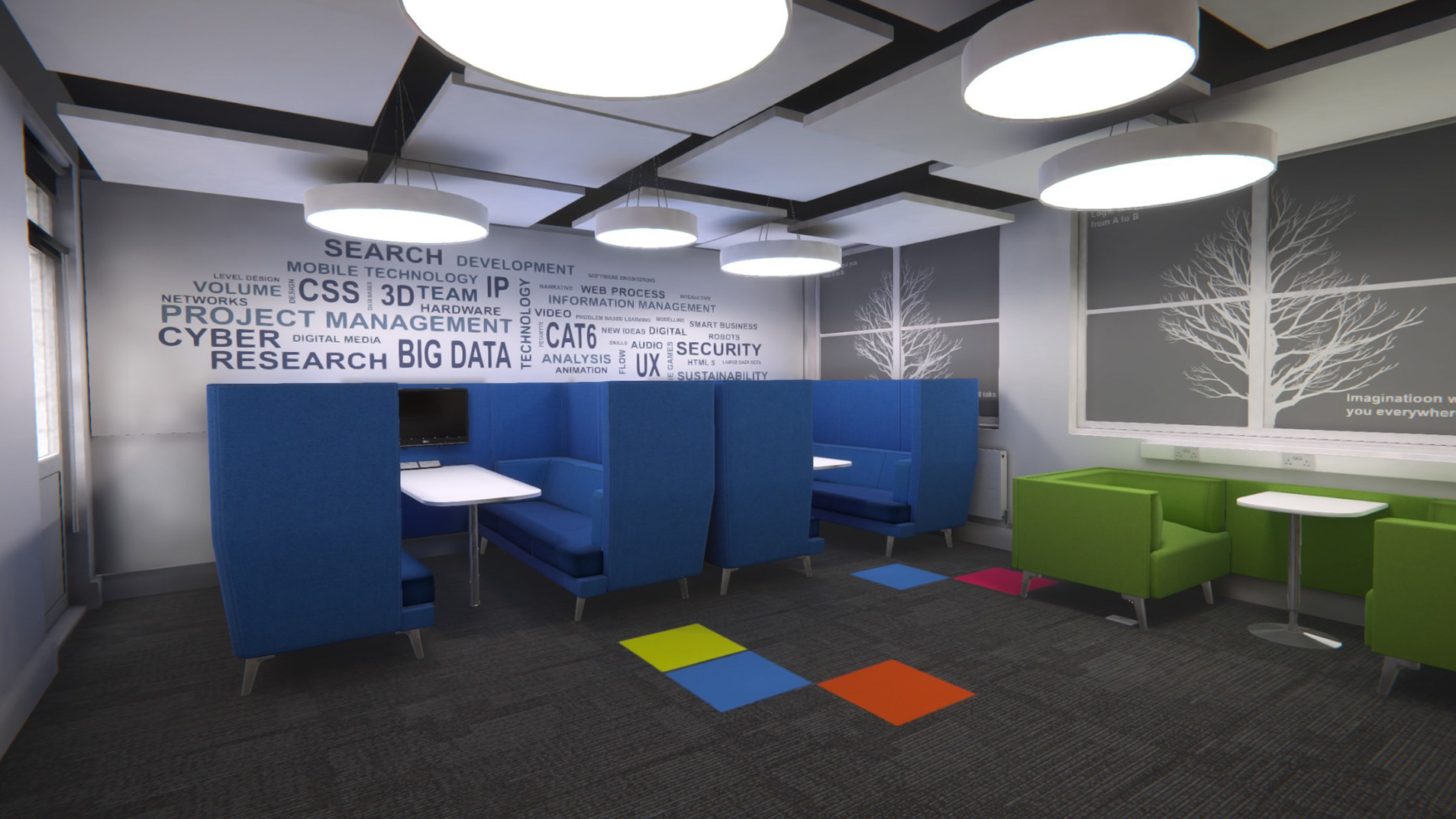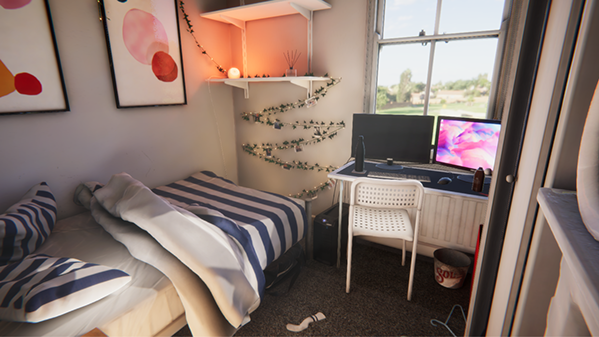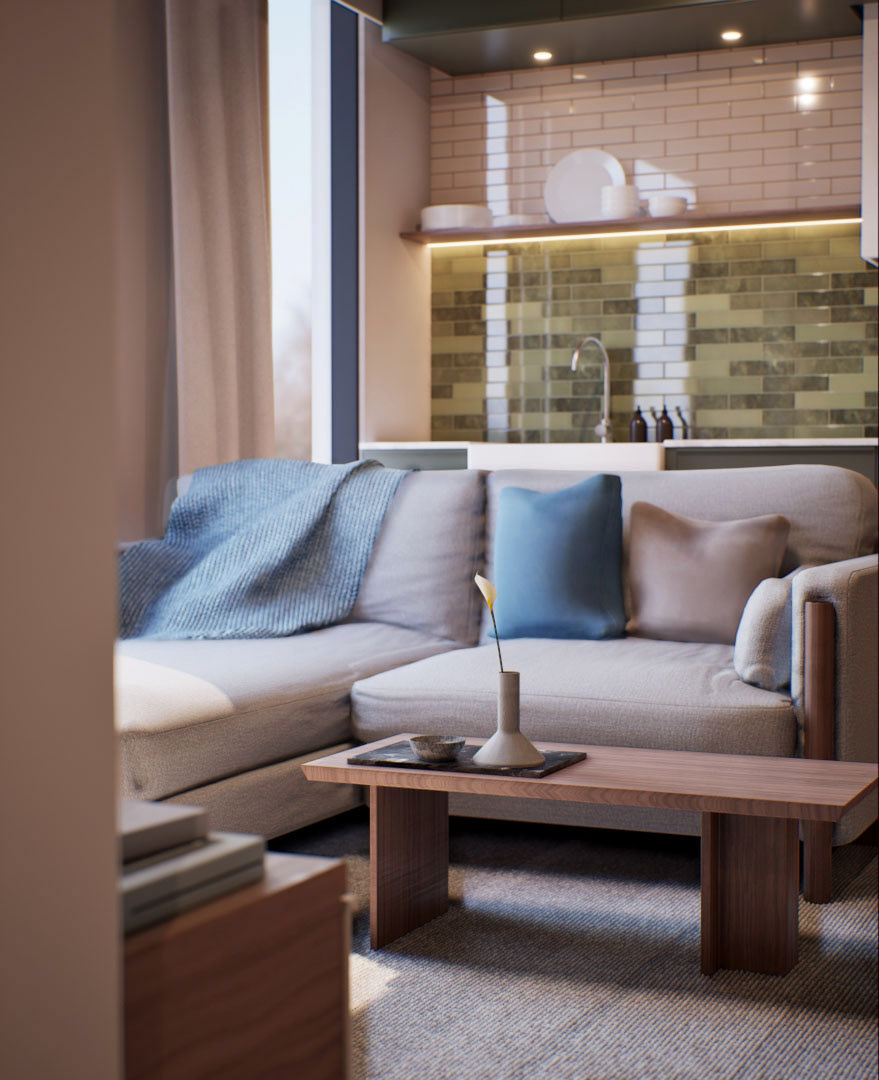
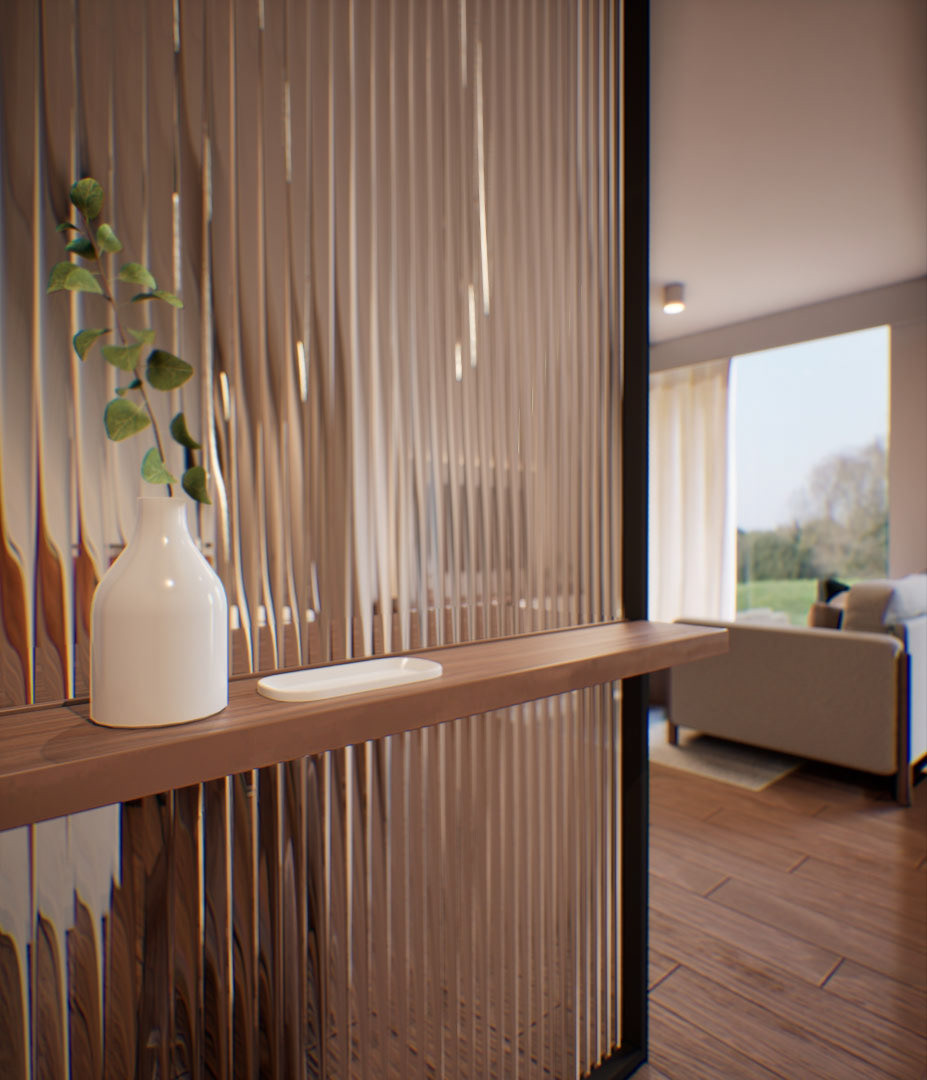
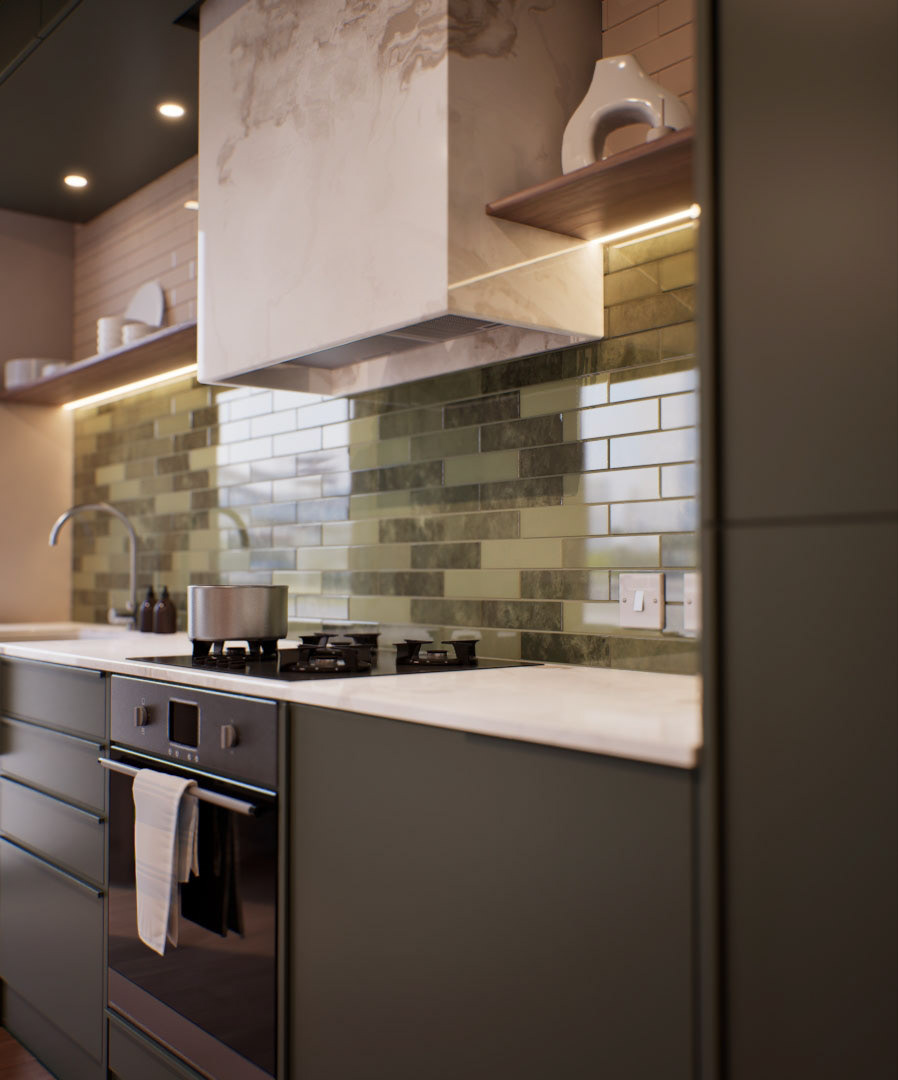

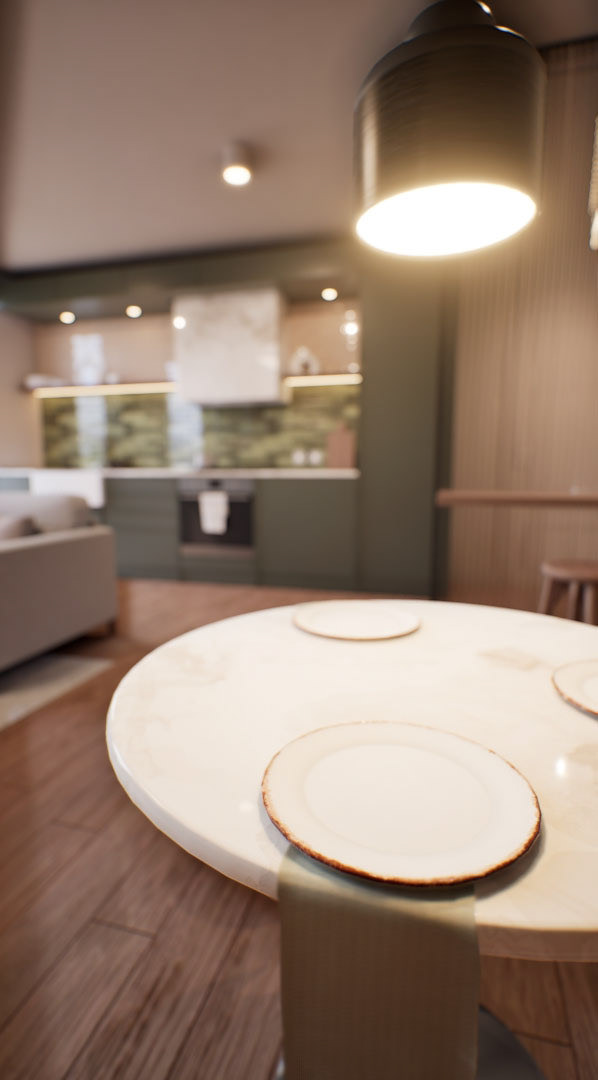

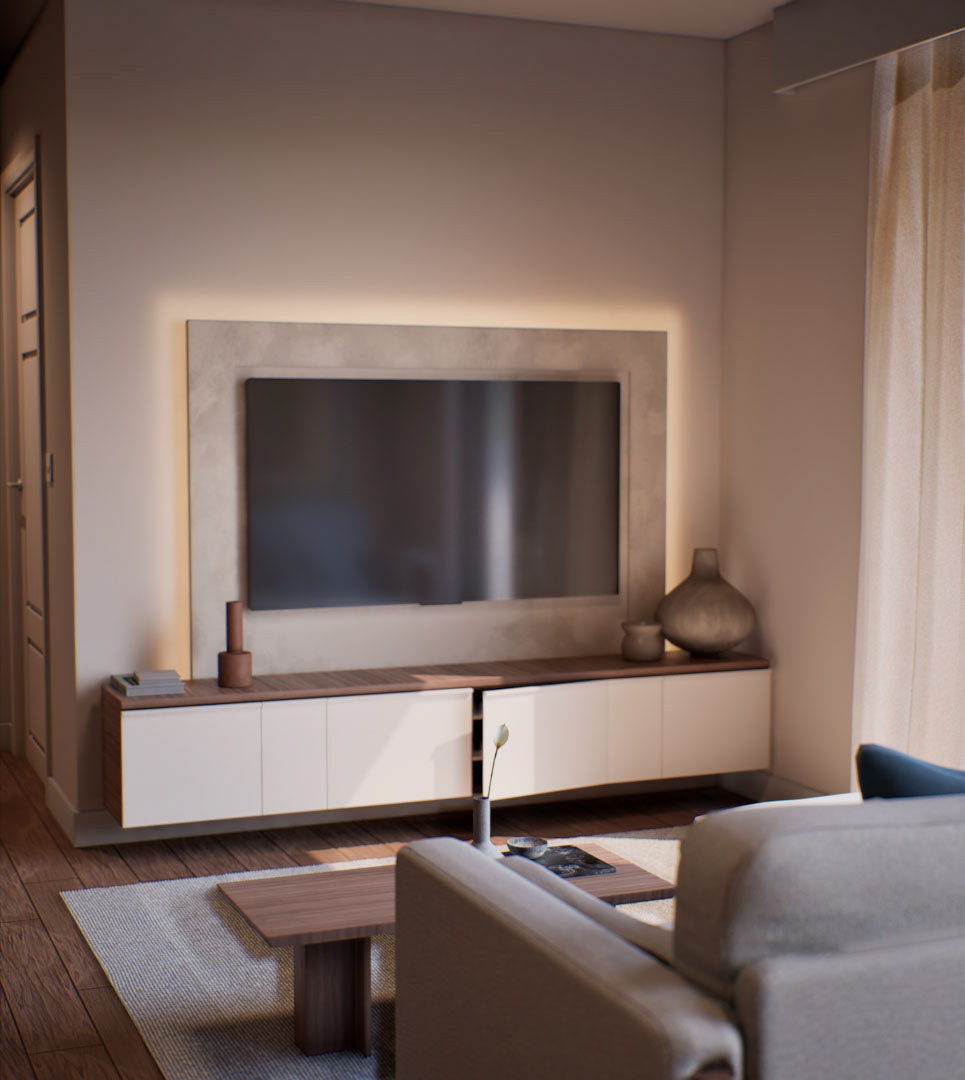

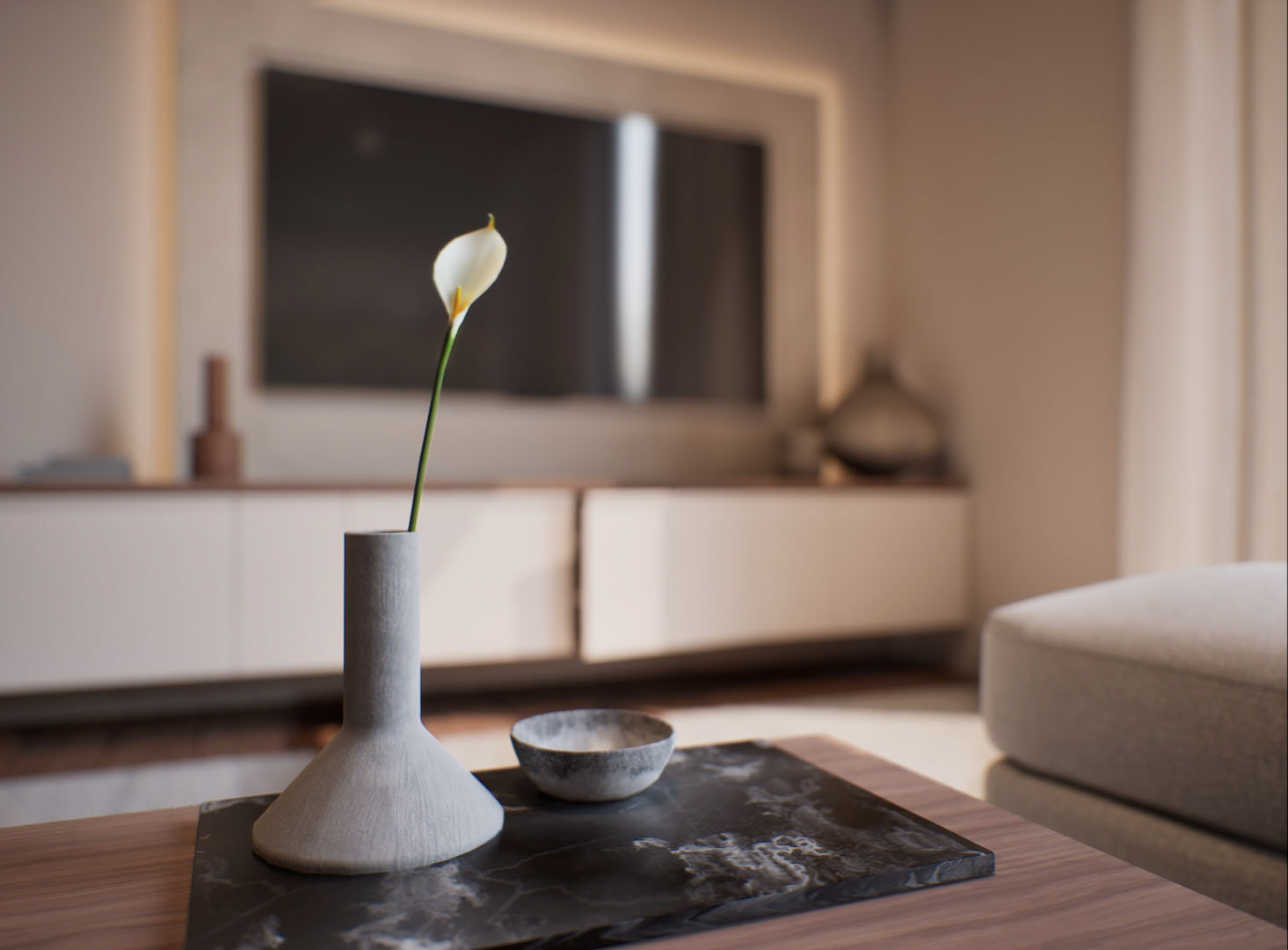

This page details the creation process and production pipeline for a realistic interior apartment demo built in Unreal Engine 5. All elements - from modelling to texturing to material and lighting - were created entirely from scratch. Additionally, I focussed on following games design best practices and optimisation throughout the creation process. The goal was to ensure the scene could be implemented in real time application or interactive experience while maintaining strong performance from a 3D content creation perspective.
The Entire scene remain under 40,000 Polygons.
Software used: 3dsMax, Substance Painter & Designer, Adobe Photoshop and Unreal Engine 5 .
Creation Process Breakdown
The process began with a two-bedroom floor plan to define space, window placement, and wall layout, ensuring accurate scale. The initial focus was on the living/dining area, assessing the volume of furniture and props I intend to create to ensure the room remains functional and maintains good flow.
Sourced floorplan and Initial blockout
This was proceeded by 3D model creation across each section of the space. As stated, these models were created with the intention of real-time application use, and therefore, best practises were strictly adhered to. To keep the polycount down without sacrificing on detail gained by the topology, typical high polycount assets had back faces removed if not visible to the player. Example imagery, Sofa.



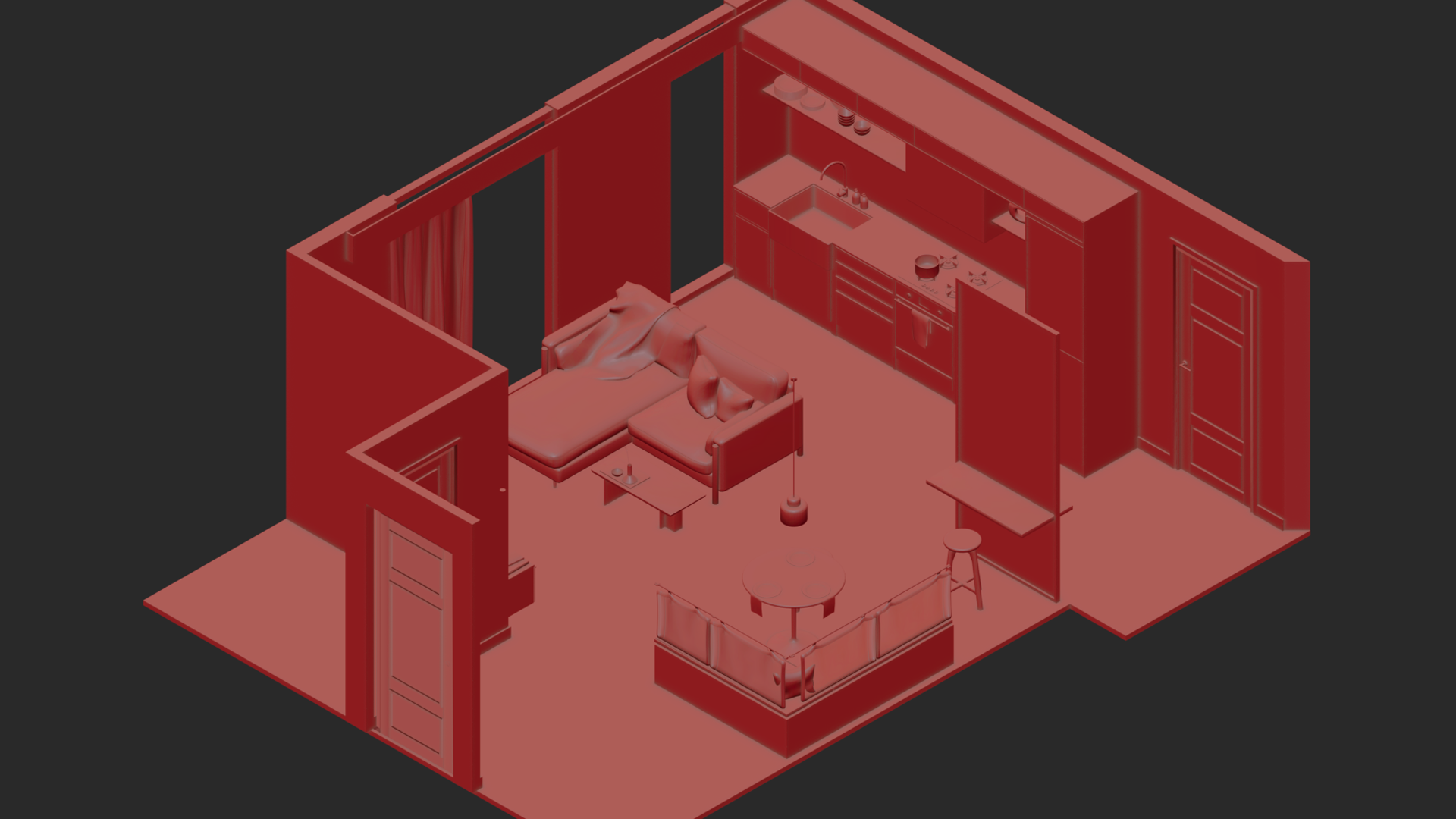
Fully modelled scene
Example of deleted back faces in the Sofa
Render from Substance Painter. Additional crease detail added through height.
Substance Designer was used to create several seamless, tiling textures used throughout the room - notably the green kitchen tiles, wooden panel flooring, limewash paint on a feature wall, and the woven fabric for the sofa. Take the Green tile as an example, after creating the varied tiles, I used the generated height map alongside displacement in-engine to add depth to the tile beyond the Normal Map.
Texture with displacement in engine
Mable texture in engine
Composing and Finalising in Unreal Engine 5
Below are screenshots of the interior space, fully lit in-engine. My goal was to create a cozy, warm, and inviting lighting setup, using warm tones to contrast with the cooler tones in the kitchen. Most of the exterior lighting was generated using an HDRI, with a subtle directional light added to introduce variation in the lounge and cast shadows across the sofa and TV.
